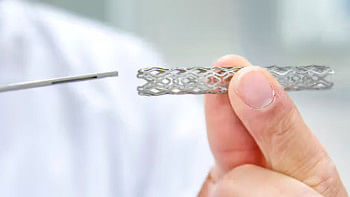Cut your coat according to your cloth
 Family planning is key to slowing unsustainable population growth and the resulting negative impacts on the economy, environment, and national and regional development efforts. It is generally achieved through usage of contraceptive methods. The best practices in birth control method, however, are negotiable. We do not have enough of complication -free methods, that's why we see plenty of objections from the users.
Family planning is key to slowing unsustainable population growth and the resulting negative impacts on the economy, environment, and national and regional development efforts. It is generally achieved through usage of contraceptive methods. The best practices in birth control method, however, are negotiable. We do not have enough of complication -free methods, that's why we see plenty of objections from the users.
This writeup will discuss in details the best usage of existing methods for the couples. After marriage, each couple should make a plan that how many children they want to have; it should be justified by economic, social, and educational perspectives .So the main message for every human beings is : cut your coat according to your cloth.
Mainly there are three types of modern methods:
1. Hormonal Method: Pill, Injection, Hormonal IUD, Implant
2. Non-hormonal method: IUD (Non Hormonal), Condom, LAM (lactational amenorrhea method)
3. Permanent method: NSV(for male), Tubectomy (female)
There are also many traditional methods: calendar based, withdraw method (we sometimes call Ajole) and so on. There are also some emergency contraceptives. But it is a matter of great regret that still there are plenty of people who use herbal, ayurevedic or bonaji ingredients component for birth control purpose. These are not scientifically approved and may cause many gynecological complications even ovary cancer.
It is a problem in our country as well as in the world that people do not want more children but do not know what contraceptive suits them. Generally, couples who want to extend the space between births should use temporary methods, and those who feel they have a complete family they should use permanent method.
Non-hormonal methods like condom, IUD are preferable to pill, injection like hormonal methods.
Different methods require different levels of diligence by the users. Methods with little or nothing to remember, or that require a clinic visit less than once per year are said to be non-user dependent, forgettable or top-tier methods. Intrauterine methods, implants and sterilization fall into this category.
Many hormonal methods of birth control and LAM require a moderate level of thinking. For many hormonal methods, clinic visit is necessary in every three months for a year to renew the prescription. The pill must be taken every day, the patch must be reapplied weekly, or the ring must be replaced monthly. Injections are required once every 12 weeks. The rules for LAM must be followed every day. Both LAM and hormonal methods provide a reduced level of protection against pregnancy if they are occasionally used incorrectly (rarely goes longer than 4–6 hours between breastfeeds, a late pill or injection or forgetting to replace a patch or ring on time). The actual failure rates for LAM and hormonal methods are higher than the perfect-use failure rates.
Higher levels of user commitment are required for other methods. Barrier methods, coitus interruptus, and spermicides must be used in every act of intercourse. Fertility awareness-based methods may require daily tracking of the menstrual cycle. The actual failure rates for these methods may be much higher than the perfect-use failure rates.
Different forms of birth control have different potential side effects. Not all, or even most, users will experience side effects from a method. The less effective the method, the greater the risk of the side effects associated with pregnancy. Because of their systemic nature, hormonal methods have the largest number of possible side effects.
Minimal or no side effects are possible with coitus interruptus, fertility awareness-based method and LAM. Some forms of periodic abstinence encourage examination of the cervix; insertion of fingers into the vagina to perform this examination may cause changes in the vaginal environment. Following the rules for LAM may delay a woman's first post-partum menstruation beyond what would be expected from different breastfeeding practices.
Barrier methods have a risk of allergic reaction. Users sensitive to latex may use barriers made of less allergenic materials - polyurethane condoms, or silicone diaphragms. Barrier methods are also often combined with spermicides, which have possible side effects of genital irritation, vaginal infection, and urinary tract infection.
Sterilization procedures are generally considered to have low risk of side effects, though some persons and organizations disagree. Female sterilization is a more significant operation than vasectomy, and has greater risks; in industrialized nations, mortality rate is 4 per 100,000 tubal ligations vis a vis 0.1 per 100,000 vasectomies.
After IUD insertion, users may experience irregular periods in the first 3–6 months with Mirena, and sometimes-heavier periods and worse menstrual cramps with ParaGard. However, ninety-nine percent of IUD users are pleased with them. A positive characteristic of IUDs is that fertility and the ability to become pregnant returns quickly once the IUD is removed.
So the fact is that we have to use family planning methods according to our needs and norms of life style for getting sustained health and sound family. It is a human right and sound economic investment.
The writer is Field Research Supervisor, icddr,b. E-mail: [email protected]

 For all latest news, follow The Daily Star's Google News channel.
For all latest news, follow The Daily Star's Google News channel. 



Comments